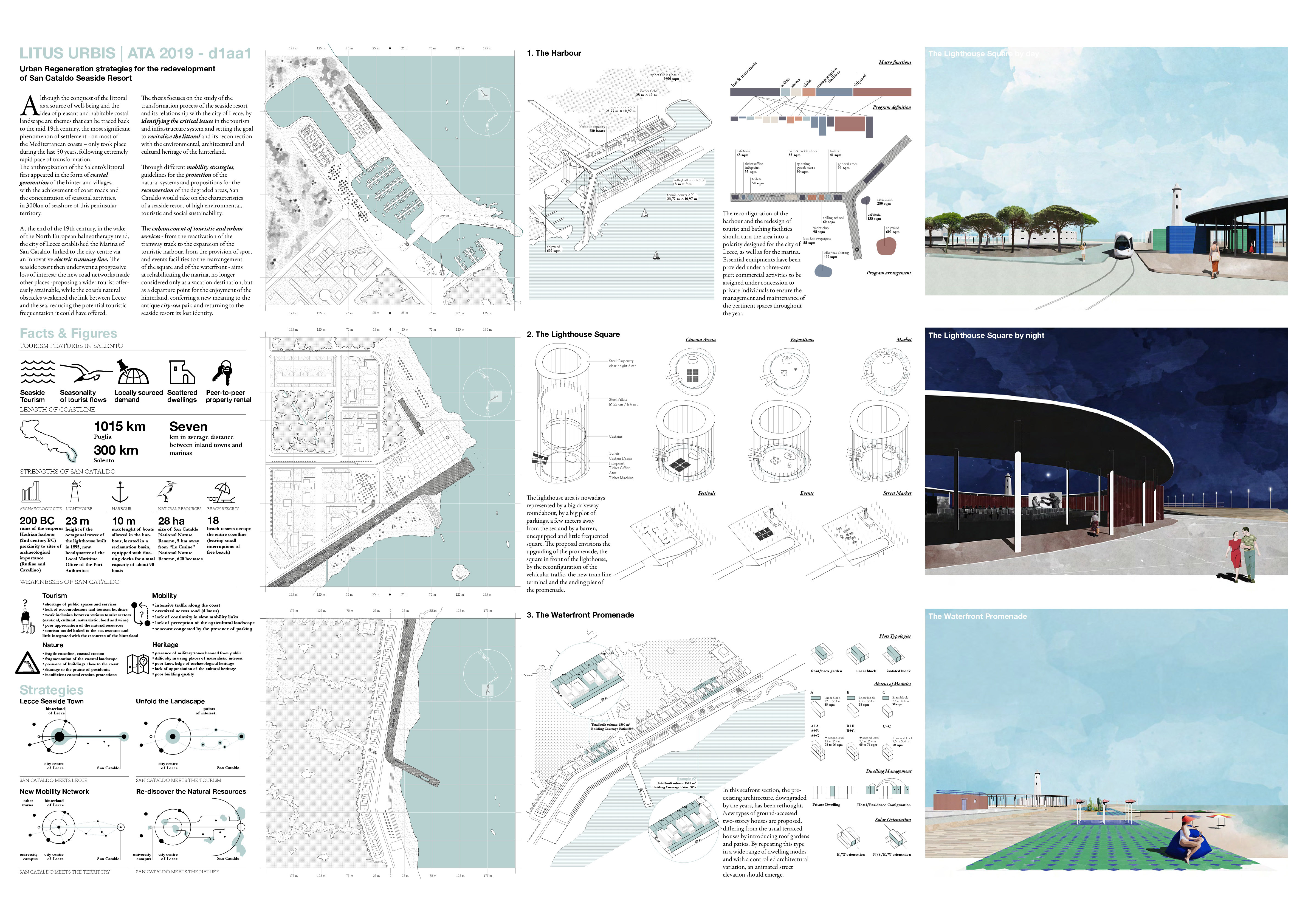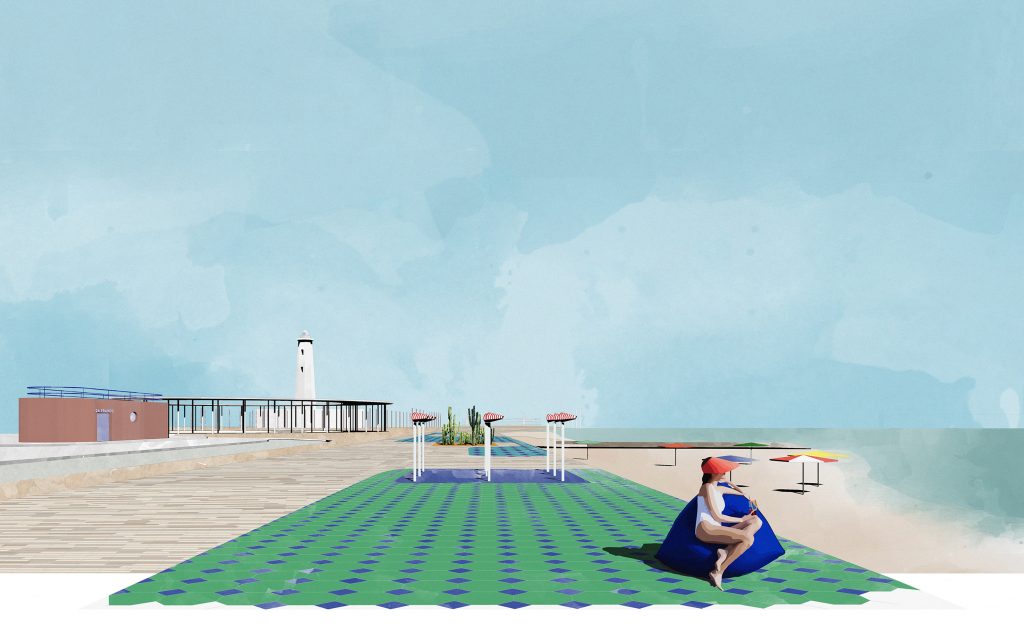The thesis focuses on the study of the transformation process of the seaside resort of San Cataldo and its relationship with the city of Lecce (Apulia, Italy), by identifying the critical issues in the tourism and infrastructure system and setting the goal to revitalize the littoral and its reconnection with the environmental, architectural and cultural heritage of the hinterland. Through different mobility strategies, guidelines for the protection of the natural systems and propositions for the reconversion of the degraded areas, San Cataldo would take on the characteristics of a seaside resort of high environmental, touristic and social sustainability. https://www.behance.net/gallery/67040249/Litus-Urbis
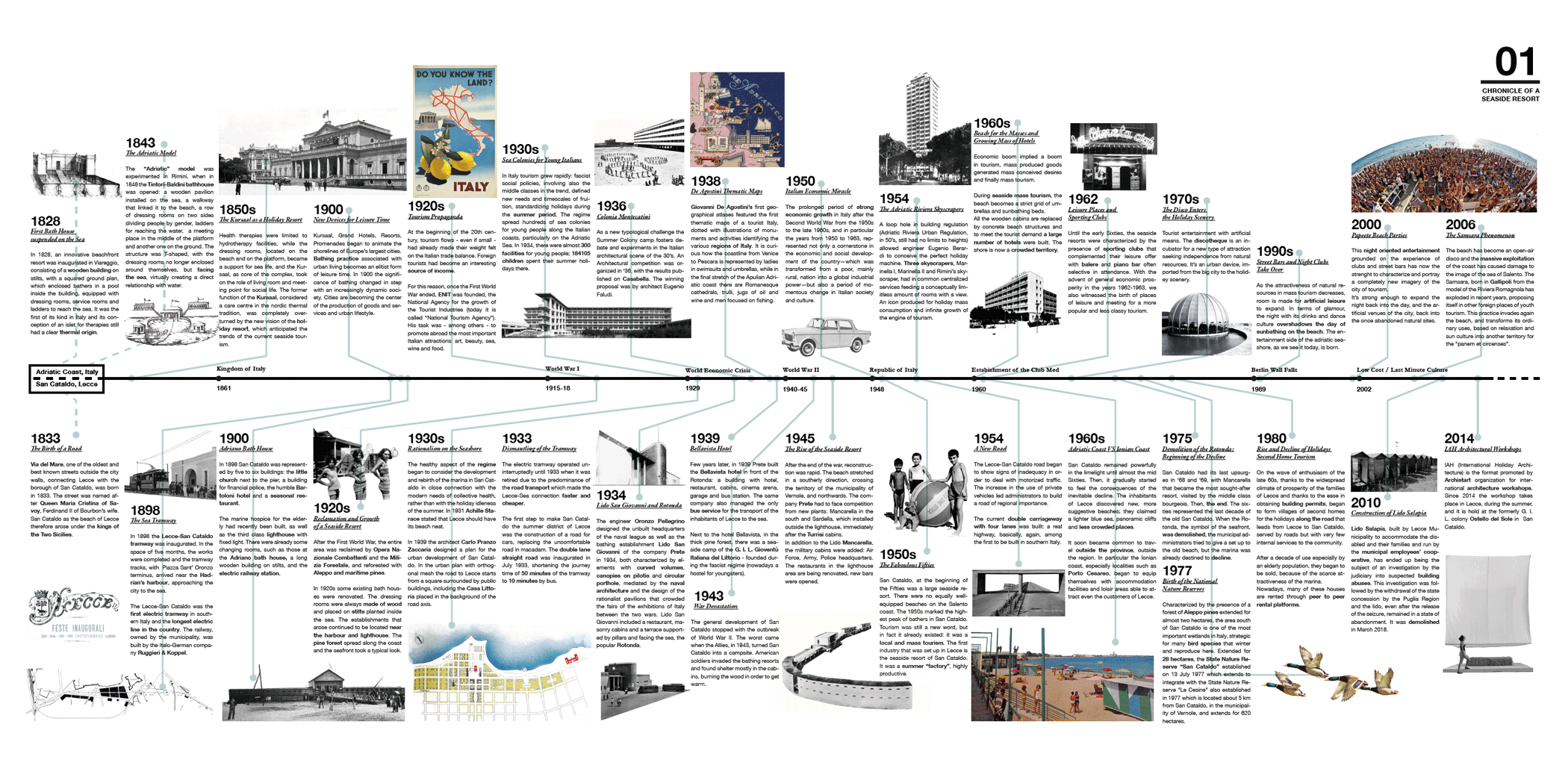
Although the conquest of the littoral as a source of well-being and the idea of pleasant and habitable costal landscape are themes that can be traced back to the mid 19th century, the most significant phenomenon of settlement - on most of the Mediterranean coasts – only took place during the last 50 years, following extremely rapid pace of transformation. The anthropization of the Salento’s littoral first appeared in the form of coastal gemmation of the hinterland villages, with the achievement of coast roads and the concentration of seasonal activities, in 300km of seashore of this peninsular territory. At the end of the 19th century, in the wake of the North European balneotherapy trend, the city of Lecce established the Marina of San Cataldo, linked to the city-centre via an innovative electric tramway line. The seaside resort then underwent a progressive loss of interest: the new road networks made other places -proposing a wider tourist offer- easily attainable, while the coast’s natural obstacles weakened the link between Lecce and the sea, reducing the potential touristic frequentation it could have offered. https://www.koozarch.com/interviews/litus-urbis_urban-regeneration-strategies-for-the-redevelopment-of-san-cataldo-seaside-resort/
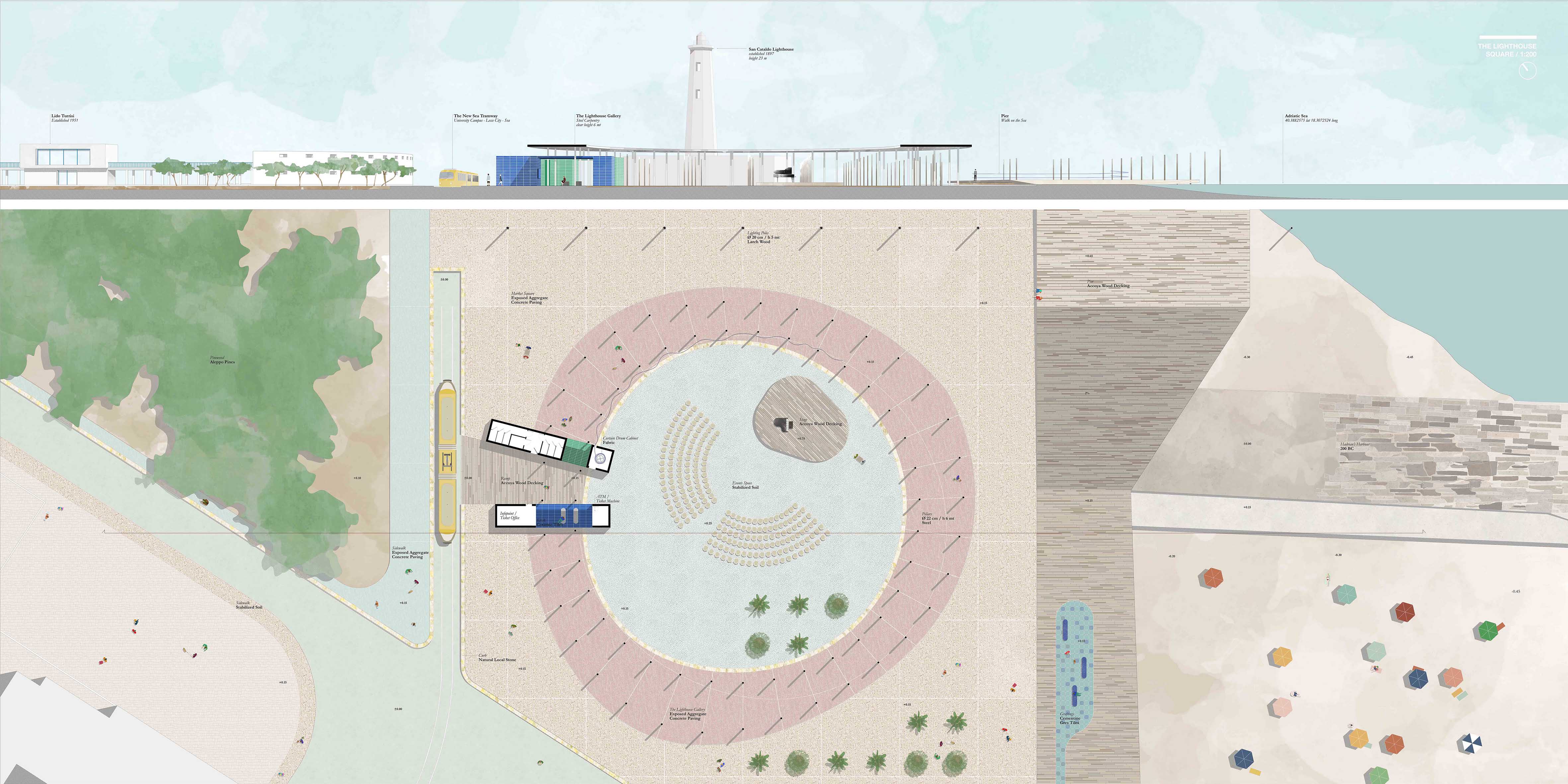
The thesis focuses on the study of the transformation process of the seaside resort and its relationship with the city of Lecce, by identifying the critical issues in the tourism and infrastructure system and setting the goal to revitalize the littoral and its reconnection with the environmental, architectural and cultural heritage of the hinterland. Through different mobility strategies, guidelines for the protection of the natural systems and propositions for the reconversion of the degraded areas, San Cataldo would take on the characteristics of a seaside resort of high environmental, touristic and social sustainability. Through different mobility strategies, guidelines for the protection of the natural systems and propositions for the reconversion of the degraded areas, San Cataldo would take on the characteristics of a seaside resort of high environmental, touristic and social sustainability. The enhancement of touristic and urban services - from the reactivation of the tramway track to the expansion of the touristic harbour, from the provision of sport and events facilities to the rearrangement of the square and of the waterfront - aims at rehabilitating the marina, no longer considered only as a vacation destination, but as a departure point for the enjoyment of the hinterland, conferring a new meaning to the antique city-sea pair, and returning to the seaside resort its lost identity.
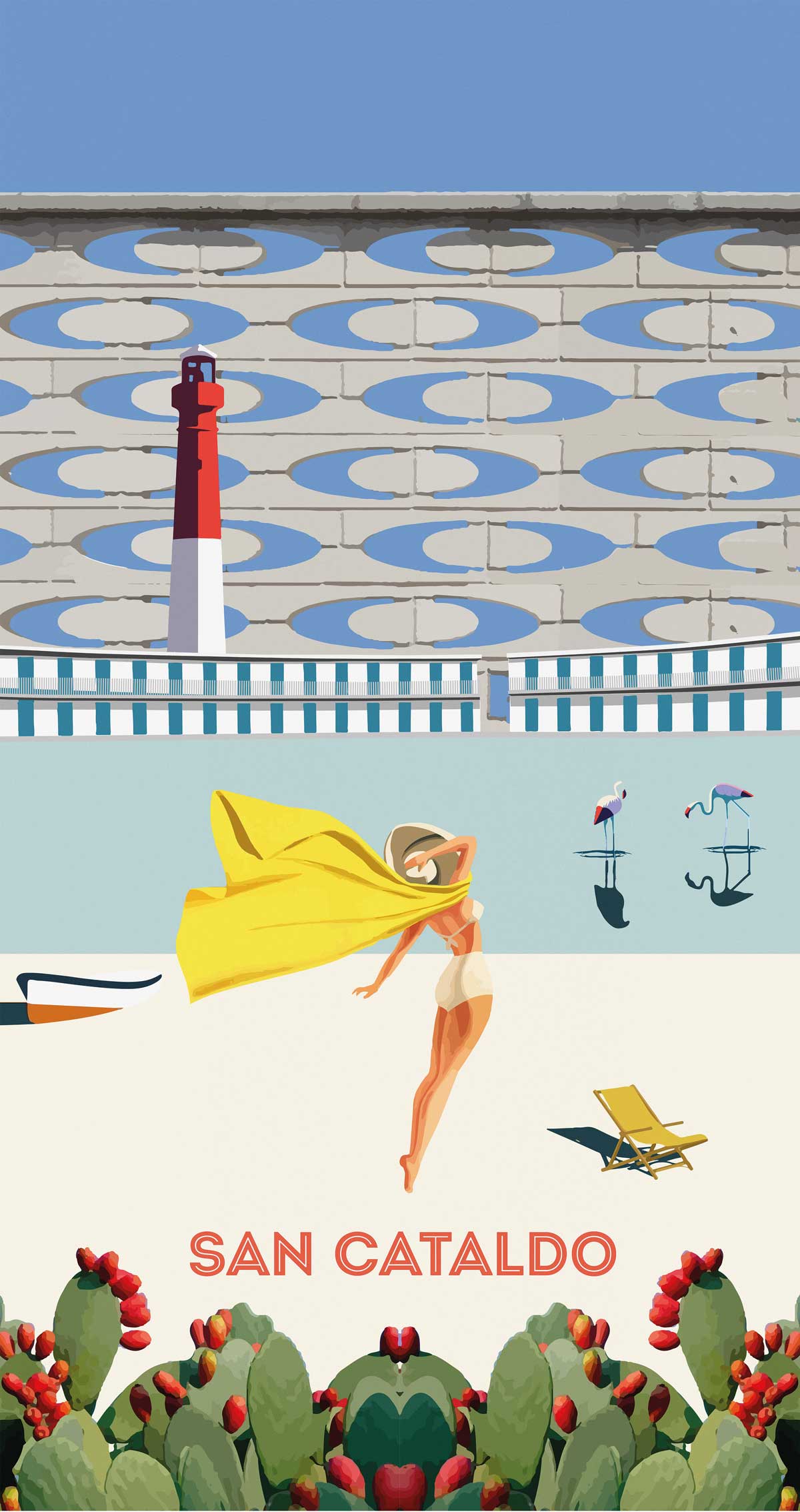
The Board:
